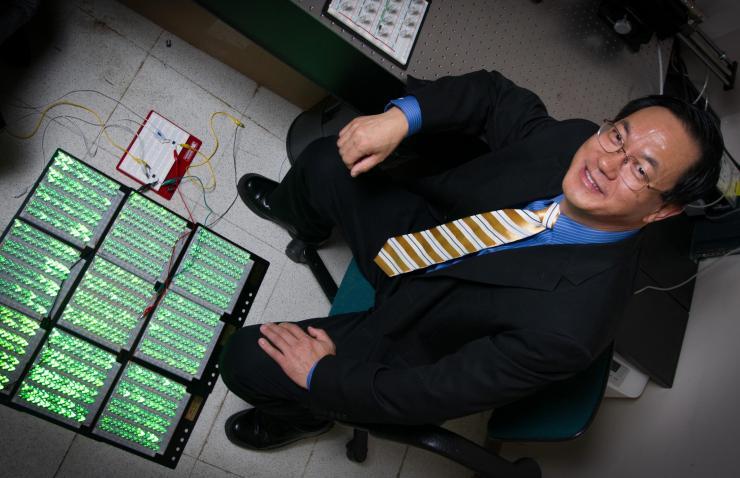New Insights Could Pave The Way For Self-Powered Low Energy Devices
Mar 29, 2018 — Atlanta, GA

Research by Zhong Lin Wang explores low-energy self-powered devices
Most people have felt that sting from grabbing a doorknob after walking across a carpet or seen how a balloon will stick to a fuzzy surface after a few moments of vigorous rubbing.
While the effects of static electricity have been fascinating casual observers and scientists for millennia, certain aspects of how the electricity is generated and stored on surfaces have remained a mystery.
Now, researchers have discovered more details about the way certain materials hold a charge even after two surfaces separate, information that could help improve devices that leverage such energy as a power source.
“We’ve known that energy generated in contact electrification is readily retained by the material as electrostatic charges for hours at room temperature,” said Zhong Lin Wang, Regents' Professor in the School of Materials Science and Engineering at the Georgia Institute of Technology. “Our research showed that there’s a potential barrier at the surface that prevents the charges generated from flowing back to the solid where they were from or escaping from the surface after the contacting.”
In their research, which was reported in March in the Advanced Materials, the researchers found that electron transfer is the dominant process for contact electrification between two inorganic solids and explains some of the characteristics already observed about static electricity.
josh.brown@comm.gatech.edu




